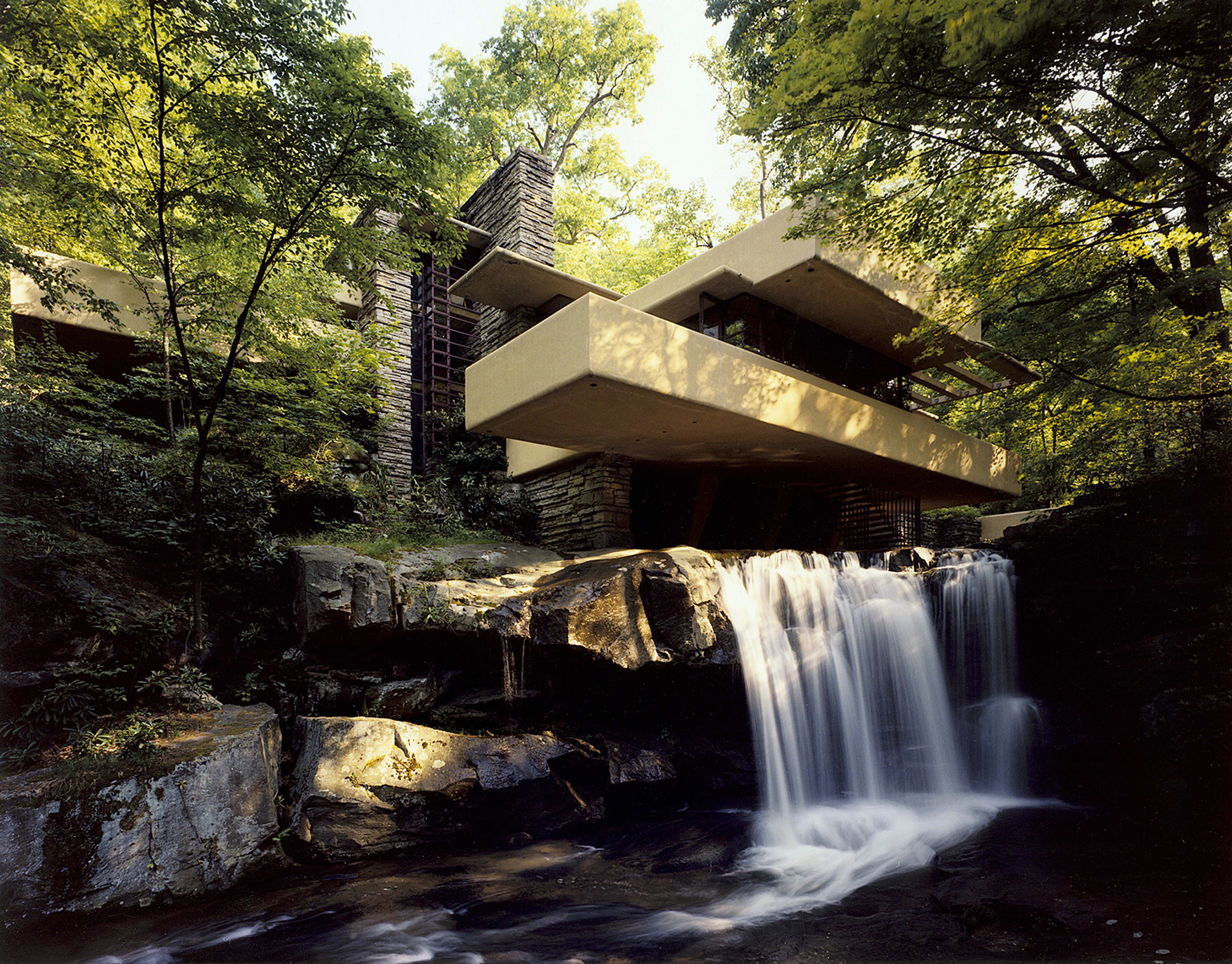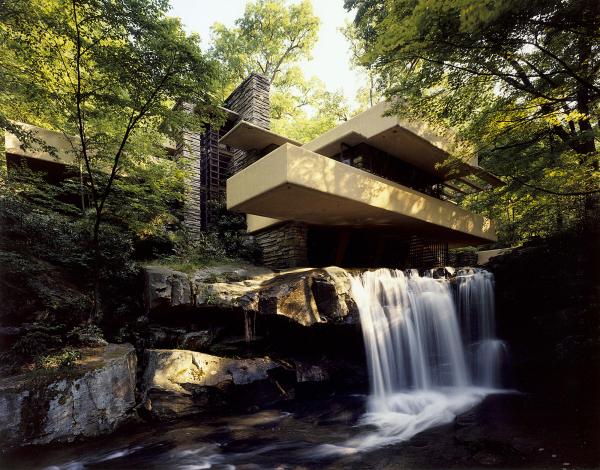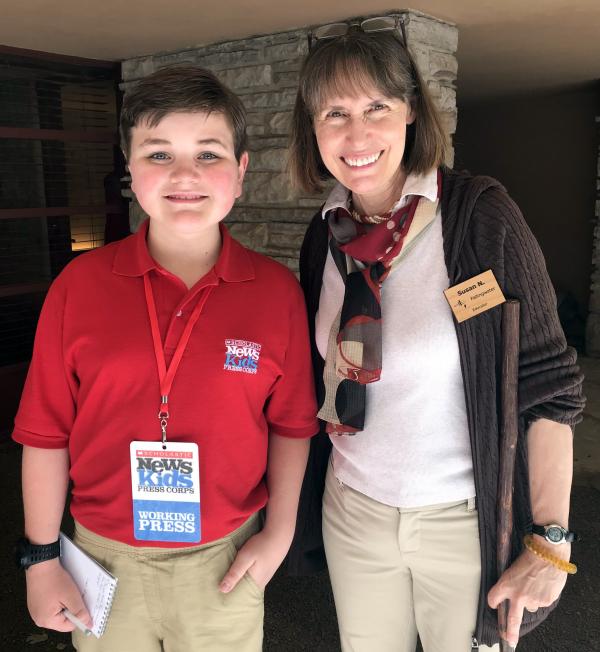KID REPORTERS’ NOTEBOOK
A Visit to Frank Lloyd Wright’s Fallingwater


Located in rural Pennsylvania, Fallingwater takes its name from the waterfall beneath it.
Tucked deep in the woods of the Pennsylvania countryside, Fallingwater is one of the country’s most famous private homes.
Built on a rocky hillside, the house rises over a waterfall in the Mill Run section of Stewart Township, which is located about 45 miles outside of Pittsburgh. Designed by renowned architect Frank Lloyd Wright in the 1930s, the house was designated a National Historic Landmark in 1966.
During a recent visit to Fallingwater, I spoke with tour guide Susan Nicholson and public tour manager Denise Miner, who told me more about the historic residence.
“ORGANIC ARCHITECTURE”
Wright, who died in 1959, was known for incorporating nature into his spare designs. “He wanted to promote ‘organic architecture,’ which is the harmony between design and nature,” Nicholson said.
According to the Frank Lloyd Wright Organization, the term is one that the architect struggled to describe throughout his long career. “For some, it is an architecture rooted in nature’s forms and principles,” writes Stuart Graff, the organization’s president. “For others, the focus is on the connection from interior to exterior and the use of abstracted plant geometries.”
Ultimately, Graff concludes, Wright was ahead of his time in considering environmental sustainability in the buildings he designed.
RISING ABOVE A WATERFALL
In 1935, Wright took on a wealthy client named Edgar Kaufmann, who owned a department store in Pittsburgh. Kaufmann commissioned Wright to design a house that his family could retreat to on weekends and summer vacations.
The Kaufmanns assumed that the house would face the free-flowing stream and waterfall called Bear Run on their property. “Wright, however, suggested that the house rise above the waterfall, rather than face it,” Miner said.
Wright designed the building to have a large, open plan. He also designed the furniture, as well as a pool, canopy, and bridge on the property.
“Paintings, prints, and sculptures by famous artists such as Picasso are scattered throughout the house,” Nicholson said.
The house, which was completed in 1939, has cantilevered (attached at only one end) concrete floors and terraces on all three levels. Wright wanted the Kaufmann family to have spacious outdoor areas in which to enjoy nature.

Nolan with Susan Nicholson, a tour guide at Fallingwater
A PANORAMIC VIEW
When you step inside the house, your attention is immediately drawn outside. Wright purposely designed the house to lead you there. Glass windows and doors allow for a panoramic view.
Local sandstone was used for the rough-cut stone flooring and walls. All of the colors inside and outside the house were chosen to blend in with the surroundings.
“STUDY NATURE”
For the past 56 years, the Western Pennsylvania Conservancy has maintained Fallingwater. A variety of tours allow visitors to enjoy Wright’s masterpiece. Since 2012, camps and workshops have also been held for people interested in architecture and design.
The house more than lives up to Wright’s philosophy: “Study nature, love nature, stay close to nature. It will never fail you.”
